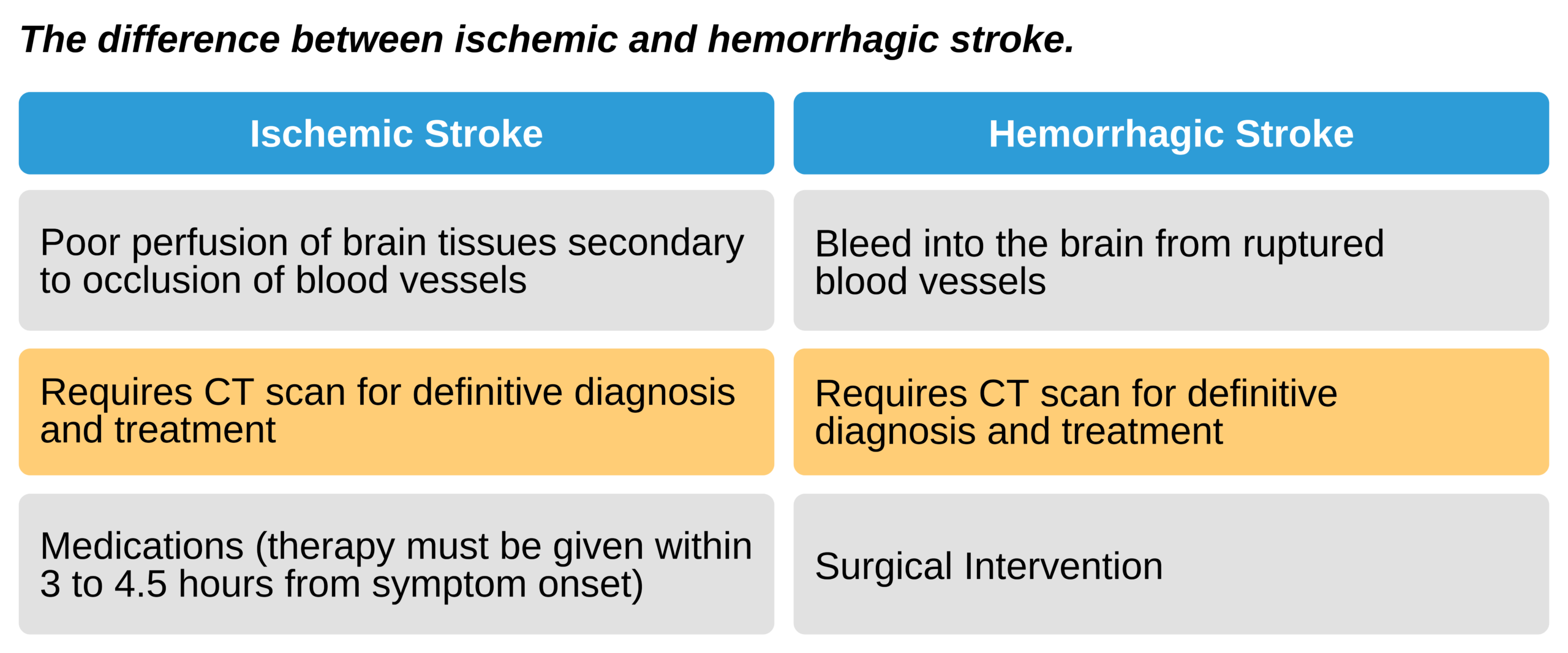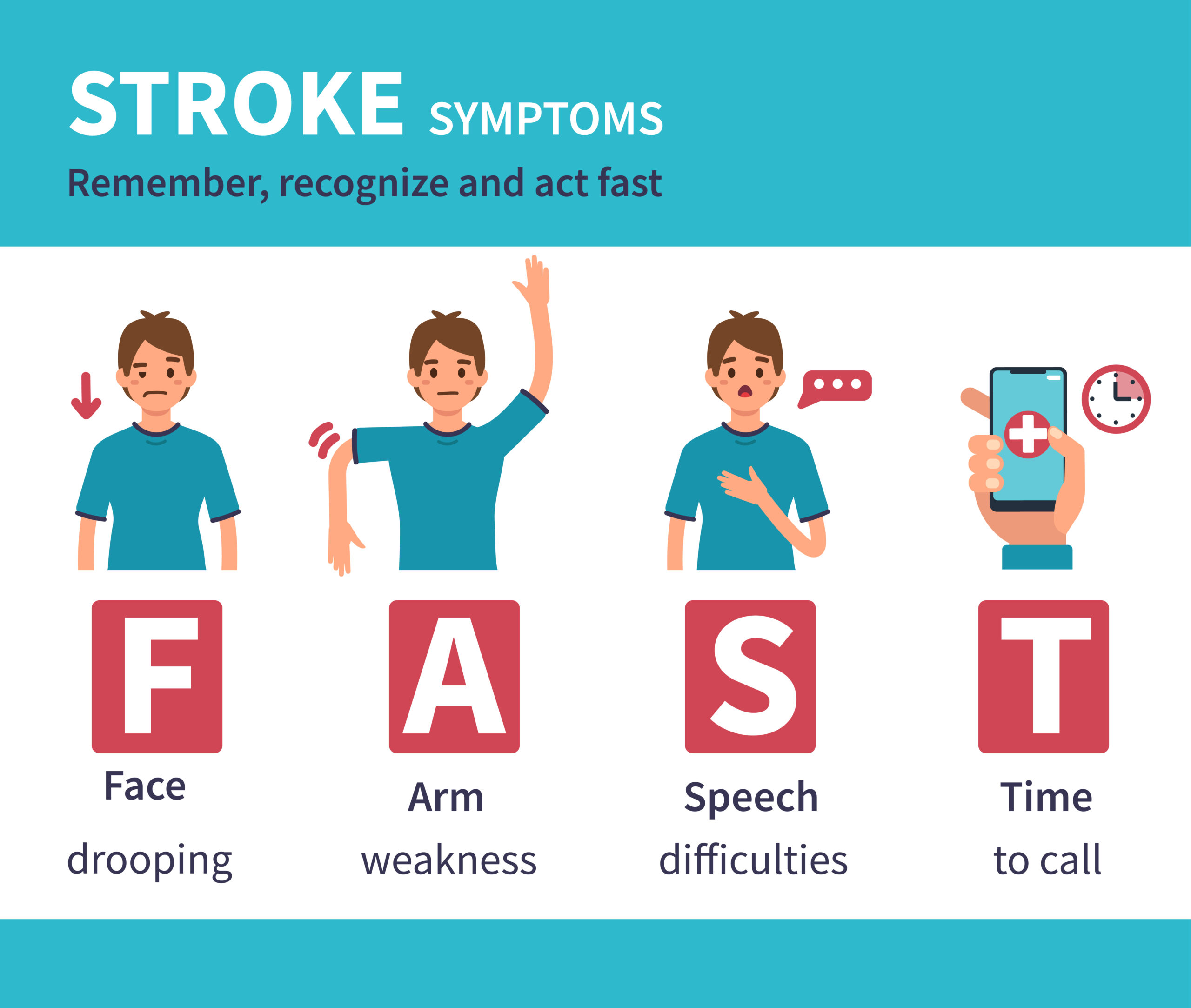Chapter Progress
0% Complete
Get CPR/AED/First Aid Certified Today
Stroke
Definition of Stroke
There are two major types of stroke: ischemic stroke and hemorrhagic stroke.
Ischemic stroke is the more common of the two. Both must be addressed immediately, but ischemic stroke can be treated with medications, while hemorrhagic stroke must be treated surgically. The pharmacologic treatment of ischemic stroke is time-bound. Therapy must be given within 3 to 4.5 hours after the onset of symptoms. Identifying and differentiating between both medical conditions necessitates a CT scan. Therefore, it is necessary to transfer the patient to an ED as soon as possible.

Ischemic and Hemorrhagic Stroke Differences
Signs and Symptoms of a Stroke
The first responder must identify the person is having a stroke. A quick way to assess for stroke is to look for:
- Facial drooping
- Arm or leg weakness
- Speech difficulty
- Visual problems
- Reports “worst headache of my life”

FAST Stroke Assessment
Related Video: What is Involved in General Stroke Care?
First Aid Interventions for a Stroke
- Responders should activate EMS and call 9-1-1 immediately.
- Responders should keep the patient calm and determine the last time the patient was normal.
- Responders must keep in mind that there is a 3 to 4.5-hour window from the onset of symptoms for the pharmacologic treatment of stroke. The EMS team will ask for this information upon their arrival, so it is helpful to find out when symptoms started.
- The patient should not take anything to eat or drink by mouth.
- The patient should be closely monitored until EMS arrives.
- If the patient loses consciousness with respiratory arrest and presents without a pulse, then high-quality CPR should be initiated.